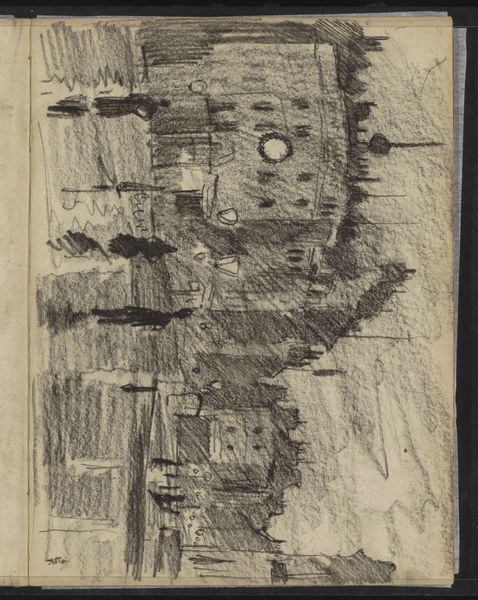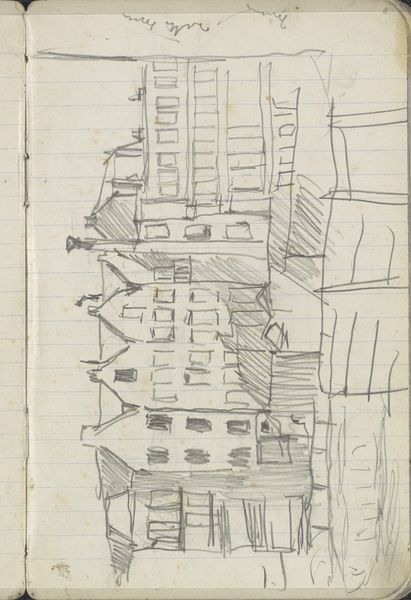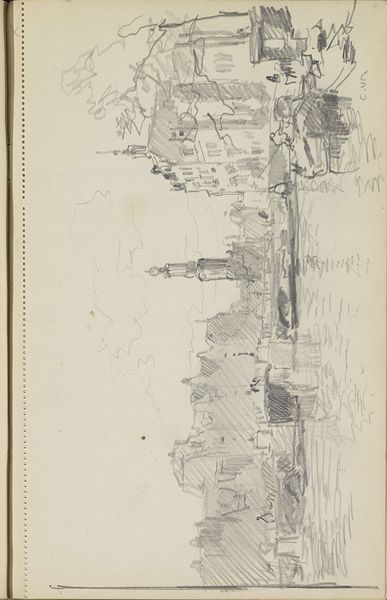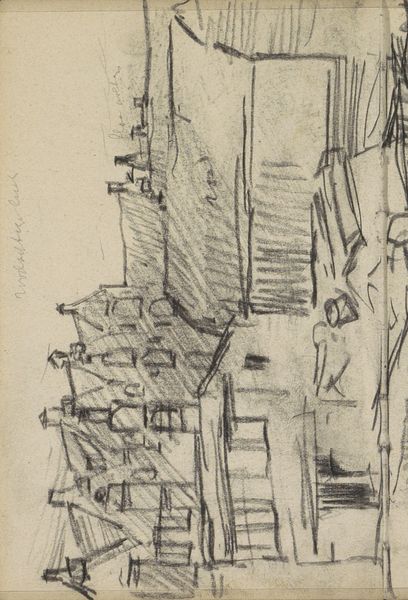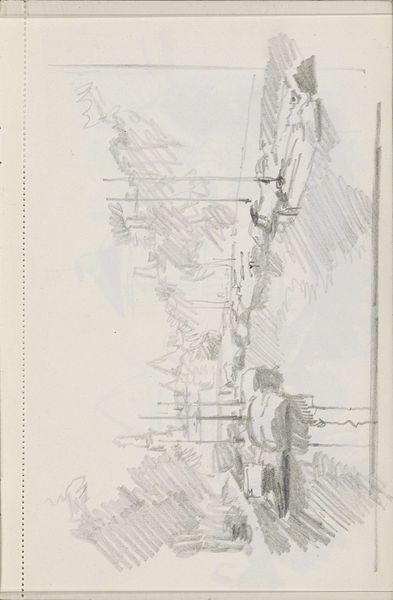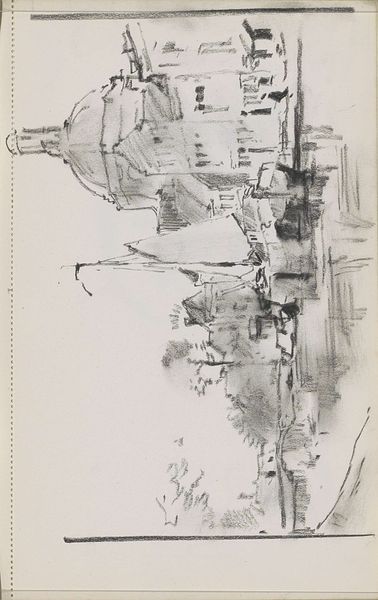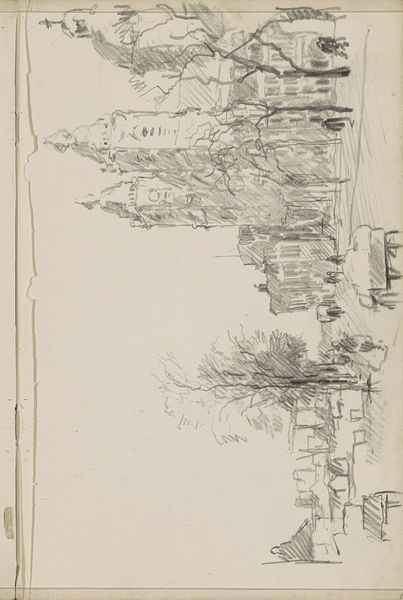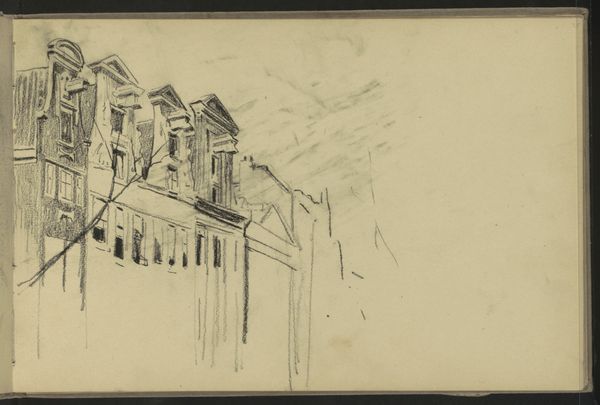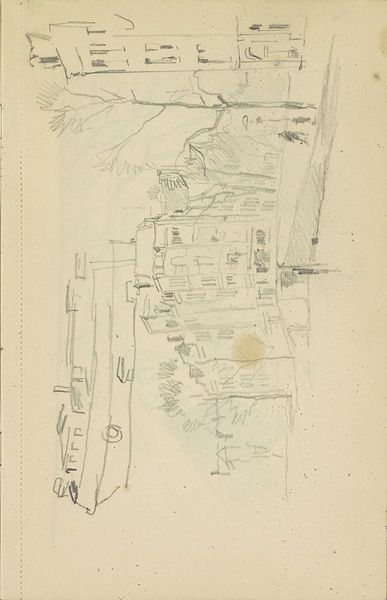
Gezicht in Londen, mogelijk de hoek van Trafalgar Square en A4 1888 - 1891
0:00
0:00
drawing, pencil
#
drawing
#
impressionism
#
pencil sketch
#
landscape
#
pencil
#
cityscape
#
realism
Copyright: Rijks Museum: Open Domain
Willem Witsen rendered this sketch of a London street, possibly near Trafalgar Square, with charcoal on paper. Observe how the architectural forms loom, seemingly pressing down upon the faceless figures below. This visual tension evokes the age-old motif of the crowd, a symbol laden with psychological and social implications. The crowd, as depicted here, shares an unsettling resemblance to historical depictions of masses, whether in religious processions, revolutionary gatherings, or even scenes of urban unrest. Consider, for instance, how the anonymous masses in ancient Roman reliefs or medieval tapestries convey a sense of collective identity and purpose, but also a potential for chaos and anonymity. The facelessness of the figures taps into our primal fears of losing individuality within a larger, uncontrollable entity. This resonates deeply with the collective unconscious, stirring feelings of both belonging and alienation. The city, with its overwhelming scale and relentless pace, amplifies this tension, transforming individuals into mere cogs within a vast, impersonal machine. This symbol—the faceless crowd—reappears throughout history, each time reflecting the anxieties and aspirations of a changing world.
Comments
No comments
Be the first to comment and join the conversation on the ultimate creative platform.
